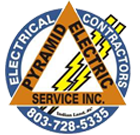Electric repair experts can help mitigate risks in electrical maintenance
Electric repairs experts in Fort Mills SC can help you conduct electrical maintenance safely. Electrical maintenance is a crucial aspect of ensuring the safety, reliability, and efficiency of electrical systems in various settings, from residential buildings to industrial complexes. It encompasses a wide range of activities aimed at preventing equipment failures, minimizing downtime, and optimizing energy consumption. In this article, we will explore the different types of electrical maintenance and how experts conduct them, along with their associated risks and benefits.
Types of Electrical Maintenance
Preventive Maintenance:
Preventive maintenance involves regularly scheduled inspections, testing, and servicing of electrical equipment to detect and address potential issues before they escalate into costly failures. This proactive approach helps in extending the lifespan of equipment and reducing the likelihood of unexpected breakdowns. Experts conduct preventive maintenance by following manufacturer guidelines, industry standards, and best practices.
Predictive Maintenance:
Predictive maintenance relies on advanced monitoring technologies and data analysis to predict equipment failures and schedule maintenance activities accordingly. By continuously monitoring parameters such as temperature, vibration, and electrical currents, experts can identify anomalies and trends indicative of impending failures. This approach minimizes downtime, optimizes maintenance schedules, and maximizes equipment reliability.
Corrective Maintenance:
Corrective maintenance, also known as reactive maintenance, involves repairing or replacing faulty equipment after a breakdown occurs. While it is typically more costly and disruptive than preventive or predictive maintenance, it is sometimes necessary for addressing unexpected failures. Experts conduct corrective maintenance promptly to restore operations and minimize downtime, employing troubleshooting techniques to diagnose the root cause of the problem.
How Experts Conduct Electrical Maintenance
- Risk Assessment:
Before initiating any maintenance activity, experts conduct a comprehensive risk assessment to identify potential hazards and develop appropriate safety measures. This includes assessing electrical hazards such as shocks, arc flashes, and fires, as well as environmental hazards such as confined spaces or hazardous materials.
- Compliance with Regulations:
Experts ensure compliance with relevant regulations and standards governing electrical maintenance, such as the National Electrical Code (NEC), Occupational Safety and Health Administration (OSHA) requirements, and industry-specific guidelines. This includes adhering to safety protocols, obtaining necessary permits, and maintaining accurate documentation of maintenance activities.
- Utilization of Specialized Tools and Equipment:
Experts utilize specialized tools and equipment designed for electrical maintenance tasks, including multimeters, infrared thermography cameras, insulation testers, and circuit tracers. These tools enable them to perform inspections, measurements, and diagnostic tests accurately and efficiently, facilitating timely identification of potential issues.
- Training and Qualifications:
Experts undergo rigorous training and certification programs to acquire the necessary skills and knowledge for conducting electrical maintenance safely and effectively. This includes training on electrical systems, equipment operation, safety procedures, and troubleshooting techniques. Additionally, experts stay updated on advancements in technology and industry best practices through continuing education and professional development activities.
Benefits of Electrical Maintenance
Improved Safety:
Regular electrical maintenance helps identify and mitigate safety hazards, reducing the risk of electrical accidents, injuries, and fatalities. By ensuring that electrical systems are properly installed, maintained, and operated, experts create a safer environment for occupants and workers.
Enhanced Reliability:
Effective maintenance practices minimize the likelihood of unexpected equipment failures, resulting in increased reliability and uptime. This is particularly critical for mission-critical systems in industries such as healthcare, manufacturing, and data centers, where downtime can have significant financial and operational implications.
Cost Savings:
While investing in electrical maintenance may incur upfront costs, it ultimately leads to long-term cost savings by extending the lifespan of equipment, reducing energy consumption, and avoiding expensive repairs or replacements due to neglect or failure. Additionally, proactive maintenance helps in identifying and addressing inefficiencies that may be wasting energy or resources.
Risks and Mitigation Strategies in Electrical Maintenance
While electrical maintenance offers numerous benefits, it also entails inherent risks that must be carefully managed to ensure the safety of personnel and the integrity of equipment. In this section, we will examine the common risks associated with electrical maintenance and the strategies experts employ to mitigate them effectively.
Risks of Electrical Maintenance
- Electrocution:
Working with live electrical components poses a significant risk of electrocution, which can result in severe injury or fatality. Contact with energized parts, accidental contact with conductive materials, or failure to de-energize equipment properly can lead to electric shocks.
- Arc Flash:
An arc flash is a sudden release of energy caused by an electrical fault, resulting in an explosive discharge of heat, light, and pressure. Arc flashes can cause severe burns, blast injuries, and even death to personnel in close proximity to the event.
- Fire Hazard:
Electrical maintenance activities, if not conducted properly, can create fire hazards due to overheating, short circuits, or sparks. Flammable materials, inadequate ventilation, and improper handling of equipment can exacerbate the risk of fires.
- Equipment Damage:
Improper maintenance practices or use of incorrect tools and techniques can damage electrical equipment, leading to costly repairs or replacements. This includes over-tightening connections, using incompatible components, or applying excessive force during maintenance procedures.
Mitigation Strategies
Personal Protective Equipment (PPE):
Experts utilize appropriate PPE, such as insulated gloves, safety glasses, arc flash suits, and face shields, to protect themselves from electrical hazards during maintenance activities. PPE helps mitigate the risk of electrocution, arc flash injuries, and other workplace hazards.
Lockout-Tagout (LOTO):
LOTO procedures are implemented to isolate energy sources and prevent accidental energization of equipment during maintenance or servicing. By locking and tagging out electrical circuits or equipment, experts ensure that they cannot be inadvertently activated, reducing the risk of electrical accidents.
Arc Flash Risk Assessment:
Prior to conducting maintenance work on energized equipment, experts perform an arc flash risk assessment to determine the potential energy levels and hazards associated with an arc flash event. This includes calculating arc flash boundaries, selecting appropriate personal protective equipment, and developing safe work practices to minimize the risk of injury.
Training and Competency:
Comprehensive training and competency programs are essential for ensuring that maintenance personnel possess the necessary skills, knowledge, and experience to perform electrical maintenance tasks safely and effectively. Ongoing training on electrical safety procedures, hazard recognition, and emergency response protocols is critical for mitigating risks.
Compliance with Standards and Regulations:
Experts adhere to relevant safety standards, regulations, and industry best practices governing electrical maintenance to minimize risks and ensure compliance with legal requirements. This includes following guidelines established by organizations such as OSHA, NFPA, and IEEE for electrical safety, equipment maintenance, and hazard mitigation.
Electrical maintenance plays a vital role in preserving the integrity, reliability, and safety of electrical systems across various industries. While it offers numerous benefits, including improved safety, enhanced reliability, and cost savings, it also entails inherent risks that must be carefully managed. By implementing effective mitigation strategies, such as utilizing appropriate personal protective equipment, following lockout-tagout procedures, conducting arc flash risk assessments, and investing in training and compliance, experts can minimize risks and maximize the benefits of electrical maintenance.
In conclusion, a proactive approach to electrical maintenance, coupled with robust risk management practices, is essential for ensuring the continued operation and safety of electrical systems in today’s dynamic and evolving environments.
Top Ft. Mill and South Charlotte Electrical Services Company
Pyramid Electric Services has provided quality electrical services since 1963 to Fort Mill, Indian Land, Ballantyne, South Charlotte, Marvin, Weddington, Mathews, Wesley Chapel, and Waxhaw areas. When you want the best in residential and electrical services, give us a call, at 803-728-5335. Emergency services are available for areas including York, Lancaster, Mecklenburg, and Union Counties.

